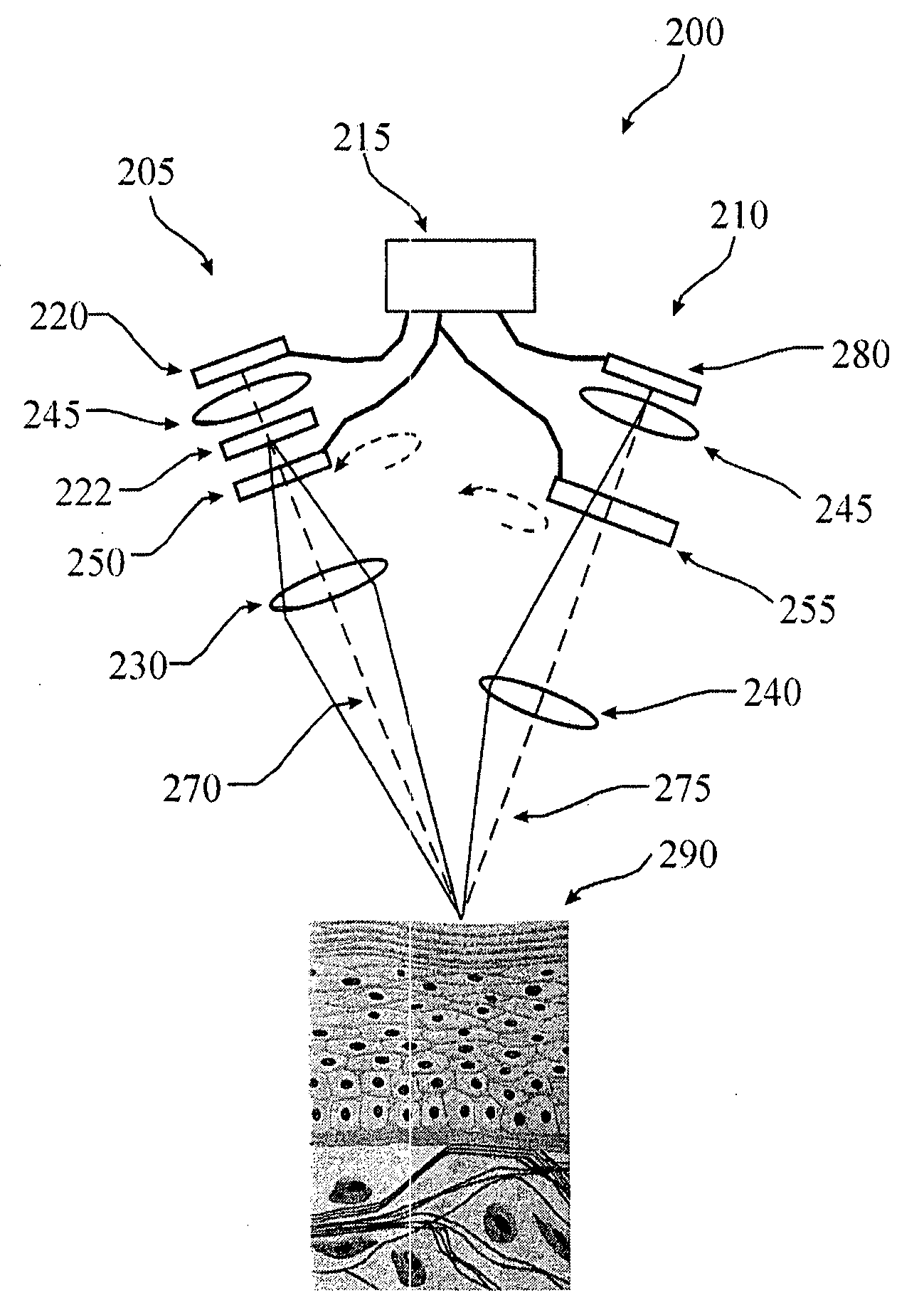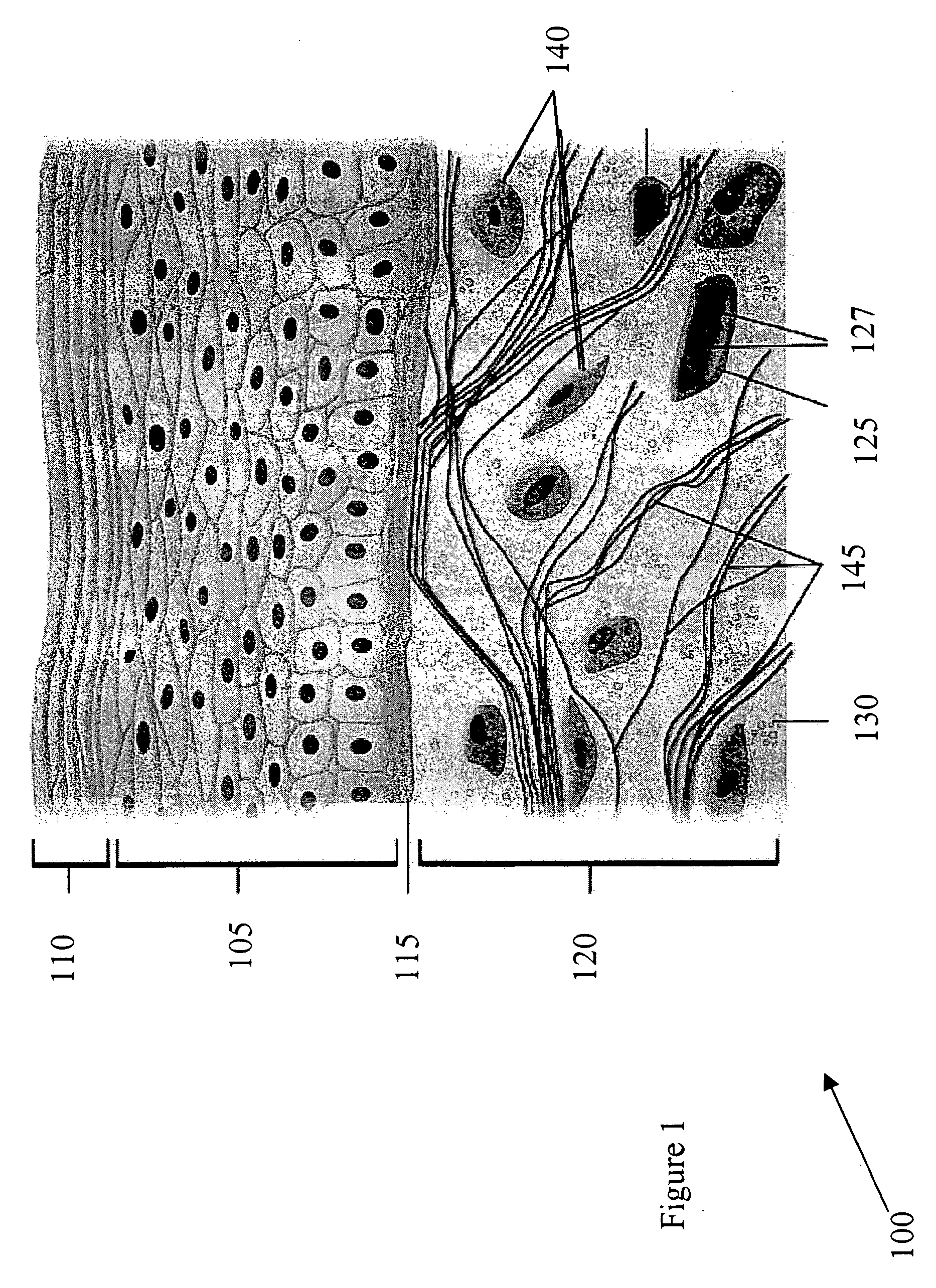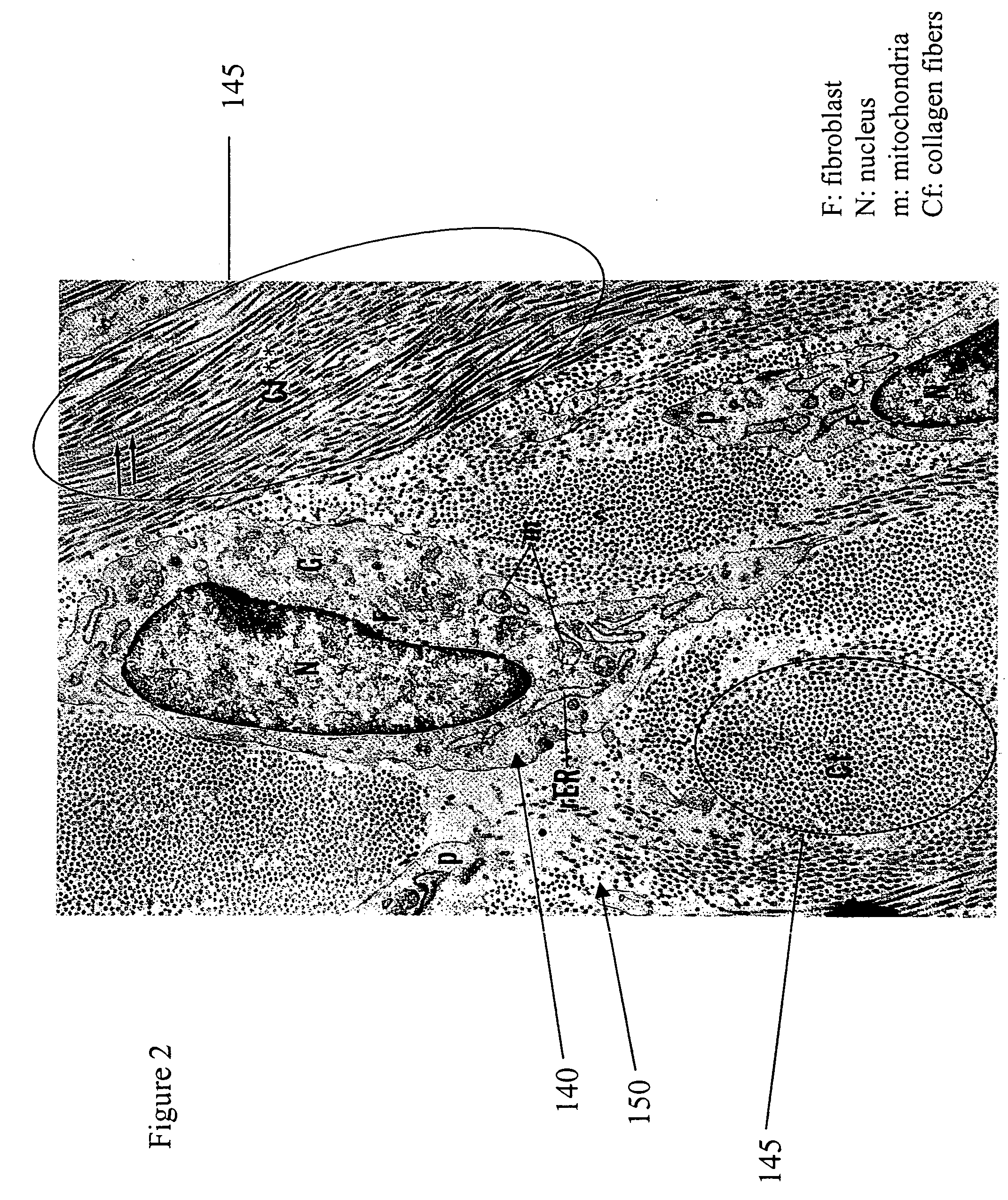Wound healing monitoring and treatment
a monitoring device and wound technology, applied in the field of wound healing monitoring and treatment, can solve the problems of inability to determine the efficacy of treatment, and the inability of clinicians to be certain about the condition of the tissue being treated, so as to facilitate quality imaging
- Summary
- Abstract
- Description
- Claims
- Application Information
AI Technical Summary
Benefits of technology
Problems solved by technology
Method used
Image
Examples
Embodiment Construction
[0033] The following is a detailed description of the preferred embodiments of the invention, reference being made to the drawings in which the same reference numerals identify the same elements of structure in each of the several figures.
[0034] The present invention can be best appreciated within the context of the biology of normal, wounded, and healed skin, and in particular, with respect to the function of fibroblasts and collagen. Accordingly, FIG. 1 depicts the cross-sectional composition of skin. Skin 100 (or the integument) covers the entire external surface of the human body and consists of two mutually dependent layers, the epidermis 105 and the dermis, which rest on a fatty subcutaneous layer, the panniculus adiposus (not shown). The epidermis 105, which is the outer layer of skin, is made up of epithelial cells (also known as squamous cells or keratinocytes), basal cells, and melanocytes. The outermost layer of the epidermis 105 comprises layers of dead epithelial cells...
PUM
 Login to View More
Login to View More Abstract
Description
Claims
Application Information
 Login to View More
Login to View More - R&D
- Intellectual Property
- Life Sciences
- Materials
- Tech Scout
- Unparalleled Data Quality
- Higher Quality Content
- 60% Fewer Hallucinations
Browse by: Latest US Patents, China's latest patents, Technical Efficacy Thesaurus, Application Domain, Technology Topic, Popular Technical Reports.
© 2025 PatSnap. All rights reserved.Legal|Privacy policy|Modern Slavery Act Transparency Statement|Sitemap|About US| Contact US: help@patsnap.com



